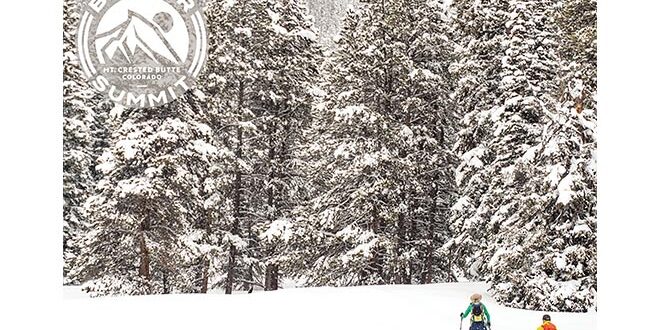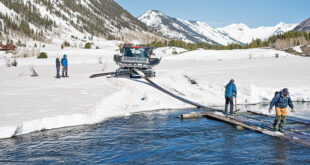Focusing on both qualitative and quantitative analysis
[ By Kendra Walker ]
During last week’s second annual Blister Summit hosted by Blister Review at Mt. Crested Butte, the winter outdoor industry had the opportunity to share its latest products and technology with fellow gearheads and consumers. It also presented Blister the opportunity to share more information about its new venture, Blister Labs.
A new partnership between Blister, the University of Colorado-Boulder and Western Colorado University, Blister Labs is working with engineering faculty and students to test gear at Western’s Paul M. Rady School of Computer Science and Engineering.
The program focuses on both qualitative experience on the trails and quantitative analysis in the lab through sophisticated dynamic modeling. Tests will include: comparing durability and stiffness of bike wheels at different price points and weights; producing more consumer-friendly apparel ratings for water resistance and breathability; and working to standardize flex ratings of ski boots.
Engineers and designers in the outdoor industry will also meet with students, faculty, and Blister reviewers at Western to discuss their current product testing and potential ideas for improvement. The testing is being done at junior level classes through the Western Colorado University Partnership Program, and there will be opportunities for internships over the summer.
Blister plans to keep this testing very consumer facing, by regularly sharing the progress of the Blister Labs tests on its website and GEAR:30 podcast, as well as incorporating the results into its product reviews and Buyer’s Guides.
The goal is for outdoor enthusiasts to have access to new tests and data to better understand what they are and aren’t getting if they spend money on expensive gear and apparel.
During one of the Blister Summit panels last week at the Elevation Hotel, Blister founder Jonathan Ellsworth and several of the key players involved in the Labs shared their excitement for the program.
“We’re still trying to put out the most accurate and useful product information. That’s the backbone of what we do,” said Ellsworth. “Engineering is no longer the snapshot of a table. Engineering is becoming the process. We’re bringing this interesting world of engineering and making it applicable to real world activities.”
“We’re getting good at the qualitative side, but I’m curious to see whether what we experience in a product is or is not reflected in the hard data,” said Blister managing editor Luke Koppa. “I’m excited to learn more about how physical qualities translate onto the snow or on the trail.”
“There’s often a disconnect in the industry,” said professor Sean Humbert. “The products and the experience of the users is very different,” he said, noting the constant variations of snow conditions, weather, and user aggression and tiredness. “One piece that’s missing is real time loads that can be applied to the models that can actually generate something useful. We’re not just testing skis in the lab.”
“We spend a lot of money on these Gore-Tex jackets,” said professor Lauren Cooper. “They’re designed to be able to withstand 28,000 mm of water in 24 hours. Why do they have to be so waterproof and does the average skier need that performance? Or you have the most waterproof shell but you’re sitting on a chairlift and you still get water on your butt. I’m interested in what is the threshold of what we need to feel comfortable for a certain activity.”
Cooper also noted how many textile companies are starting to manufacture their products without harmful chemicals typically used for waterproofing. “Will this shell work as well as the old shell? It might convince people to be more environmentally friendly,” she said.
The group expressed their excitement to be working at Western. “One of the advantages of being a university is our ability to work and collaborate with a large array of groups,” said professor Greg Vanderbeek. “Working with companies, sponsors, new ideas and being on the forefront of design is really exciting for our students.”
Rady Program director Jeni Blacklock agreed, “Some engineering students are really interested in the outdoor industry realm. It wouldn’t be possible without their passion as well, and they’re all really excited about these projects.”
“I think about these Western students,” said Cooper. “I’m hoping they’re going to be some of the great minds solving these challenges.”
Ellsworth reiterated the importance of Blister’s role in sharing the data and analysis that will come from the Blister Labs to the consumer public. “When some engineers out there get the results, that’s where the work stops. To me that’s where it starts. I’m going to be extremely stringent about this being communicated in clear ways and not dumbed down. How to communicate this in meaningful ways is a clear priority in all of this.”
He concluded, “We are really excited about this. It’s been one of the most exciting things I’ve ever been involved with in my life. The ambitions for this are big. We’ve got a lot of work to do.”
 The Crested Butte News Serving the Gunnison Valley since 1999
The Crested Butte News Serving the Gunnison Valley since 1999





